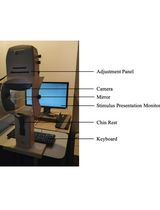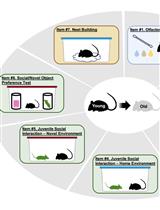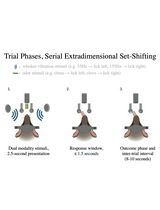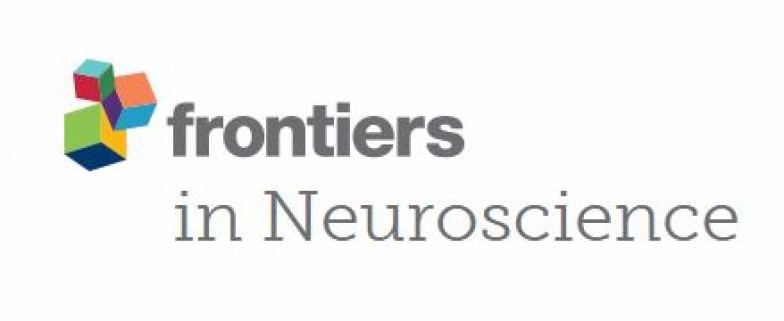- Submit a Protocol
- Receive Our Alerts
- Log in
- /
- Sign up
- My Bio Page
- Edit My Profile
- Change Password
- Log Out
- EN
- EN - English
- CN - 中文
- Protocols
- Articles and Issues
- For Authors
- About
- Become a Reviewer
- EN - English
- CN - 中文
- Home
- Protocols
- Articles and Issues
- For Authors
- About
- Become a Reviewer
Locomotion Activity Measurement in an Open Field for Mice
Published: Vol 6, Iss 13, Jul 5, 2016 DOI: 10.21769/BioProtoc.1857 Views: 21631
Reviewed by: Soyun KimAnonymous reviewer(s)

Protocol Collections
Comprehensive collections of detailed, peer-reviewed protocols focusing on specific topics
Related protocols

Pupillometry: A Simple and Automatic Way to Explore Implicit Cognitive Processing
Tian Yuan [...] Yi Jiang
Apr 5, 2025 1255 Views

The Mouse Social Frailty Index (mSFI): A Standardized Protocol
Charles W. Collinge [...] Alessandro Bartolomucci
Apr 20, 2025 1764 Views

Training Mice to Perform Attentional Set-Shifting Under Head Restraint
Katarina Kalajzic [...] Timothy Spellman
Sep 5, 2025 1433 Views
Abstract
The Open Field (OF) paradigm is one of the most known primary behavioral tests to evaluate locomotion and exploration. Altered OF behaviour is relatively simple to observe, but understanding and explaining the reasons for the observed changes is a complex task. Generally, there are two factors, which determine the behavior in this paradigm; one, a positive exploratory drive originating from the nature of rodents to explore new environments (for food and shelter); and two, the animal nature of avoiding open and brightly lit spaces (exposure to predators).
OF measures locomotor activity, exploratory drive, neophobia and certain aspects of anxiety in rodents at the same time. Furthermore, one can differ between horizontal and vertical activities (number of rearings) in the OF. After all, an altered OF behavior might come from the alterations of all of the above mentioned measures. For the proper interpretation of experimental results one has to be careful.
With the aid of the present protocol we investigated the effect of systemic L-kynurenine sulphate on open field behavior of adult male C57Bl/6j mice (Varga et al., 2015).
Materials and Reagents
- Adjustable dim light illumination is supplied with conventional argon light tubes
- Custom-made OF box prepared from common household plexiglass (Figure 1)
- Latex gloves
- 8-10-week-old male C57Bl/6j mice (n = 55) weighing 20-26 g
Note: The animals were housed under controlled laboratory conditions, in groups of 5, under an inverse 12-h dark/light cycle, with ad libitum access to food and tap water. To avoid the effects of shipping stress a 2-week habituation period was used before initiation of the behavioral testing. All housing and experiments were conducted in accordance with the European Communities Council Directives (86/609/ECC) and the Hungarian Act for the Protection of Animals in Research (XXVIII.tv. 32. §). Efforts were made to minimize the number of animals used and to reduce pain and discomfort.
Figure 1. Custom-made OF box prepared from common household plexiglass. Digital video tracking can be performed with a conventional coloured CCD camera fixed and positioned above the OF arena with a telescopic tripod stand.
Equipment
- Video-tracking system (Harvard Apparatus, model: SMART® v 3.0 ) connected to personal computer.
- Coloured CCD camera (Sony, model: SSC-DC378P )
- Telescopic tripod stand (Manfrotto, model: 420b )
Software
- Multivariate ANOVA (mANOVA) (IBM Corporation, SPSS Statistics version 20)
- SMART® software
Procedure
- General rules for OF set-up
- Illumination is one of the most important extrinsic factors in this test. Always measure illumination conditions (generally measured in Lux) in every point of the OF, avoid unintentional uneven illumination.
- Avoid light reflections. It influences the behavior and possibly the tracking procedure too.
- Cover the internal surface of the OF walls with matte colours. Light grey enables the easy detection of various coat colours if a video-tracking system is used.
- Avoid external and internal visual cues. It may result in uneven place preference.
- To avoid internal olfactory cues wipe the arena (usually 50% EtOH) before the running of the first subject and then between subjects carefully. Urination and defecation cues may change the exploratory pattern of the next animal. Before the next trial let 50% EtOH completely dry up.
- Bottom of the OF arena should be mildly rough to enable animals to move without sliding.
- Arena shape and size can be designated individually (Eilam, 2003; Lebedev et al., 2012).
- For general mouse handling conditions see Hurst and West, 2010.
- Mind the diurnal cycle of the mice. Mice are nocturnal animals. One can possibly work either in the active or in the inactive phase of the animals, but experiments must be timed in the same narrow time window of the day.
- Make video recording, perform off-line data analysis.
- Make a distinction between center and peripheral parts of the OF either manually on the bottom of the OF or in a computer-aid manner.
- Measure weight and check general health conditions of the animals one day before the OF experiment.
Note: Below, we describe a complete protocol, which we used for assessing the behavioral changes in OF after systemic L-kynurenine sulphate treatment (Varga et al., 2015).
- Illumination is one of the most important extrinsic factors in this test. Always measure illumination conditions (generally measured in Lux) in every point of the OF, avoid unintentional uneven illumination.
- Locomotion activity measurement in an open field
- The OF consisted of a square arena (50 x 50 cm) enclosed by continuous, 50-cm-high, light-gray opaque walls made of plexiglass.
- The apparatus is placed in a room illuminated by adjustable lamps giving a dim light within the arena (around 280 lux).
- Mice (n = 9 per control group, 10 per L-KYNs-treated group) are placed into the middle of one side of the arena facing the wall.
- The animals are allowed to move freely for 8 min, while their horizontal ambulatory activity is tracked with the aid of a video-tracking system (see tracked moving path of a control animal in Figure 2). This allows us to measure all the required parameters: total distance moved (cm), time spent moving (s), average speed (cm/s) and proportion of total time spent in the OF arena in different speed threshold ranges (percentage). Speed thresholds are correlated to the maximal moving speed (45 cm/s) of the mice, previously determined with an independent cohort of animals. The maximal moving speed of the mice is then halved, to give a slow moving speed group (< 22.5 cm/s) and a high moving speed group (> 22.5 cm/s).
- Following the experimental session, the mice are carefully removed from the OF, and returned to their home cage. The test equipment is cleaned with 50% ethanol solution and dried between subjects in order to avoid olfactory cuing.

Figure 2. Representative moving trace of a control mouse in the Open Field box. Peripheral zone preference (i.e., preference for being in the proximity of the walls) emerges. Moving pattern was registered with Video-tracking system.
- The OF consisted of a square arena (50 x 50 cm) enclosed by continuous, 50-cm-high, light-gray opaque walls made of plexiglass.
- Behavioralobservations in an open field
- The anxiety-like behavior in the OF arena is assessed. The percentage of the time spent within the central part of the arena is determined, which is illuminated slightly better (300 lux) than the peripheral parts (250 lux). The central area delineated virtually with SMART® software, is taken as an imaginary inner square (30 x 30 cm) of the OF. The 8-min free exploration period is recorded simultaneously by a video recorder. Stereotyped behavior relevant at the level of anxiety (number of rearings, and times spent grooming and freezing) are scored manually (Carola et al., 2002). A single primary observer blind to the experimental condition conducts the behavioral observations.
- Statistical analysis of the OF behavior is performed with the multivariate ANOVA (mANOVA) (If the data distribution violates the assumptions of parametric tests, a non-parametric test (e.g., Kruskal-Wallis test) must be used.).
- For video record please visit: http://journal.frontiersin.org/file/downloadfile/292440/octet-stream/Video%201.WMV/7/3/144405.
- The anxiety-like behavior in the OF arena is assessed. The percentage of the time spent within the central part of the arena is determined, which is illuminated slightly better (300 lux) than the peripheral parts (250 lux). The central area delineated virtually with SMART® software, is taken as an imaginary inner square (30 x 30 cm) of the OF. The 8-min free exploration period is recorded simultaneously by a video recorder. Stereotyped behavior relevant at the level of anxiety (number of rearings, and times spent grooming and freezing) are scored manually (Carola et al., 2002). A single primary observer blind to the experimental condition conducts the behavioral observations.
Notes
Digital video tracking is performed with a conventional coloured CCD camera fixed and positioned above the OF arena with a telescopic tripod stand (Figure 1). PC is installed in an adjacent room, so mice are unperturbed during the whole experiment (This separation is recommended for all kinds of behavioral experiments.).
Acknowledgments
This study was supported by grant OTKA K105077 and cofinanced by the EUROHEADPAINFP7-Health 2013-Innovation; Grant No. 602633, and grant by MTA-SZTE Neuroscience Research group.
References
- Carola, V., D'Olimpio, F., Brunamonti, E., Mangia, F. and Renzi, P. (2002). Evaluation of the elevated plus-maze and open-field tests for the assessment of anxiety-related behaviour in inbred mice.Behavioural Brain Research 134(1-2): 49-57.
- Eilam, D. (2003). Open-field behavior withstands drastic changes in arena size. Behav Brain Res 142(1-2): 53-62.
- Hurst, J. L. and West, R. S. (2010). Taming anxiety in laboratory mice. Nat Methods 7(10): 825-826.
- Lebedev, I. V., Pleskacheva, M. G. and Anokhin, K. V. (2012). [C57BL/6 mice open field behaviour qualitatively depends on arena size]. Zh Vyssh Nerv Deiat Im I P Pavlova 62(4): 485-496.
- Varga, D., Heredi, J., Kanvasi, Z., Ruszka, M., Kis, Z., Ono, E., Iwamori, N., Iwamori, T., Takakuwa, H., Vecsei, L., Toldi, J. and Gellert, L. (2015). Systemic L-Kynurenine sulfate administration disrupts object recognition memory, alters open field behavior and decreases c-Fos immunopositivity in C57BI/6 mice. Frontiers in Behavioral Neuroscience 9: 14-24.
Article Information
Copyright
© 2016 The Authors; exclusive licensee Bio-protocol LLC.
How to cite
Gellért, L. and Varga, D. (2016). Locomotion Activity Measurement in an Open Field for Mice. Bio-protocol 6(13): e1857. DOI: 10.21769/BioProtoc.1857.
Category
Neuroscience > Behavioral neuroscience > Cognition
Do you have any questions about this protocol?
Post your question to gather feedback from the community. We will also invite the authors of this article to respond.
Share
Bluesky
X
Copy link










